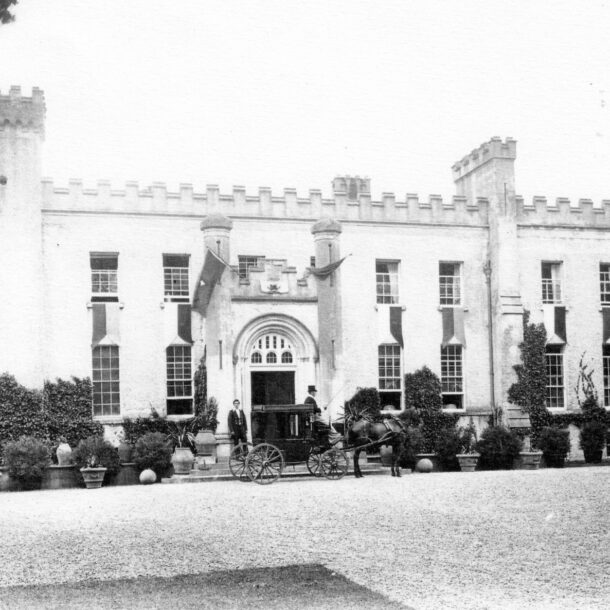

Close

The sun of the Scottish Enlightenment broke slowly in the 18th century. While leading intellectuals in Edinburgh denounced religion and superstition alike, belief in witches, demons, and a devil who walked among us died slowly in the countryside. Villagers saw the old Dunskey Castle, standing in ruin on its precipitous cliff, as one of the most haunted places in Galloway.
Dunskey Castle’s reputation as a place where evil spirits lingered may have begun with its physical surroundings. In Scotland, the landscape invites the imagination to run wild. Sheer cliffs, wild expanses of heath, and moss-shrouded rocks strike a note of sublime beauty and provoke both fear and awe. And Dunskey Castle, isolated on a stony outcrop overseeing pounding waves, stands on one of the most dramatic promontories of Galloway. When Francis Grose, a retired soldier, traveled through Scotland between 1788 and 1790 to gather stories of Scotland’s ancient history, the villagers told him that not only evil spirits, but the devil incarnate had occupied the empty, crumbling halls of the old castle. “It is particularly affirmed that a minister of the parish had here a bickering with the foul fiend Satan himself, whom he put to flight,” Grose reported. For the villagers, the world was more than nature and man. Spirits of another order, most hostile, raced through the night. But supernatural evil was not some grandiose, overwhelming force — even a rural preacher could take on Satan.
At Dunskey Castle, the spirits were not all evil; memories of centuries-old cruelty lived on in sorrowful stories of ghosts living out their misfortune for eternity. Walter de Currie, a murderous pirate, lived Dunskey Castle in the 1400s. When he plundered ships, he not only seized gold and silks but, as legend has it, also snatched an Irish minstrel. In the 15th century, lairds of the highest rank had minstrels to liven up their banquet halls and move their guests to laughter and tears. But the Irish minstrel was not content to be an easy source of entertainment to Currie. He could tell farcical stories and sing ballads of lost love to Currie and his men as they drank their fill, but he couldn’t resist poking at his new murderous master. He made Currie himself the butt of his jokes and humiliated him in front of his own men. Enraged, Currie threw the minstrel into the dungeons below Dunskey Castle and left him to starve.
The minstrel groped his way along the moist, oozing stone walls of the subterranean dungeon until he found a secret tunnel. He followed it until he reached a cave on the shore of the open sea below the castle. He could hear the roaring waves; he could see the moon glistening above, promising a life beyond Dunskey; but he could not scale the slick, steep walls. He died a slow death looking at the freedom he could not reach. Forevermore, it is said that you can hear his pipes playing above the waves on stormy nights as his ghost paces up and down the passageway where he died.